posted on: November 6, 2025
Sponsored by Face Reality
The skin barrier plays a vital role in maintaining healthy, resilient skin. Acting as the body’s first line of defense, it locks in hydration while shielding against external aggressors such as pollutants, irritants, and acne-causing bacteria. When intact, the barrier promotes balance in the skin microbiome, reduces inflammation, and helps active ingredients perform effectively. But when impaired, its protective functions falter, leading to visible and uncomfortable changes in the skin.
Signs of an Impaired Barrier
An impaired barrier reveals itself through several common symptoms. Redness, or erythema, is often one of the first visible indicators. This redness may be accompanied by dry, flaking patches as the skin struggles to retain water. Many people notice heightened sensitivity—skin that stings, tingles, or becomes irritated by products that were once well tolerated. In more advanced cases, the skin may develop a rash-like reaction after the application of topical products.
These symptoms are the direct result of a weakened protective layer. Without a strong barrier, irritants and bacteria can penetrate more easily, triggering inflammation and disrupting the skin’s natural healing process. The result is skin that not only looks compromised but also feels increasingly uncomfortable and vulnerable.
Common Disruptors
Several factors contribute to barrier disruption. Overexfoliation, whether from harsh scrubs or excessive use of chemical exfoliants, is a common culprit. While proper exfoliation can promote cell turnover, too much of it strips away essential lipids that hold the barrier together. Seasonal changes, particularly cold or dry weather, can also deplete the skin’s moisture reserves, making it more fragile.
Medications and prescription topicals, including certain acne treatments or retinoids, may compromise the barrier as a side effect, leaving the skin dry, irritated, or more sensitive. Excessive sun exposure further weakens the barrier by breaking down collagen and lipids, while insufficient hydration deprives the skin of the moisture it needs to stay supple and resilient. Understanding these disruptors is key to prevention and recovery.
Treating an Impaired Barrier
Fortunately, an impaired barrier can be repaired with a thoughtful approach that prioritizes hydration, balance, and barrier-strengthening ingredients and minimizes active ingredients in the process. Restoring skin health begins with identifying supportive ingredients that address both the structural integrity of the barrier and the balance of the microbiome.
Topical Pre- and Probiotics
These ingredients help restore balance to the skin microbiota, strengthening the barrier’s natural defense against harmful bacteria. By fostering beneficial microorganisms, pre- and probiotics reduce the likelihood of dysbiosis, an imbalance that often accompanies barrier damage.
Humectants
Ingredients like sodium PCA and hyaluronic acid draw water into the skin, replenishing hydration and reducing flakiness. This not only relieves dryness but also helps the skin better tolerate active acne-fighting ingredients.
Peptides and Ceramides
Ceramides are essential lipids that fill the gaps between skin cells, much like mortar between bricks. Replenishing the natural ceramides in the skin strengthens the barrier. Peptides support elasticity, texture, and hydration, helping the skin recover its resilience.
Anti-Inflammatories
Ingredients with calming properties play a key role in soothing redness, irritation, and discomfort. They help reduce acne-related inflammation while supporting the skin’s ability to repair itself.
Antioxidants
Free radicals from ultraviolet (UV) rays, pollution, and stress can further damage an already weakened barrier. Antioxidants defend against this damage, preventing further breakdown and supporting long-term skin health.
Oral Support
Internal supplementation—from zinc, omega-3s, and pre- and probiotics—provides systemic support for skin health. Zinc and omega-3 fatty acids reduce inflammation and promote repair, while oral probiotics help maintain a balanced microbiome from within. Clients wishing to add oral support should discuss these supplements with a health-care provider.
Building Resilience
Treatment is not only about repairing visible symptoms—it’s also about restoring the skin’s ability to protect and regulate itself. By replenishing hydration, reinforcing lipids, calming inflammation, and supporting microbial balance, the skin barrier gradually regains strength. This foundation allows clients to better tolerate professional acne regimens and active ingredients, ensuring immediate comfort and long-term results.
An impaired barrier is more than a surface-level issue. It is a signal that the skin’s defenses need care. Recognizing the signs and addressing the underlying causes with supportive ingredients lays the groundwork for healthier, clearer, and more resilient skin. In more severe cases, it’s essential to focus on home care first to restore and strengthen the skin barrier. Only once the barrier is properly prepared should professional exfoliation—even in its gentlest forms—be introduced.
Face Reality Hydrating Barrier Repair Treatment
Step 1

Cleanse the entire treatment area with a moderate amount of Barrier Balance Creamy Cleanser and rinse thoroughly with tepid water.
Step 2
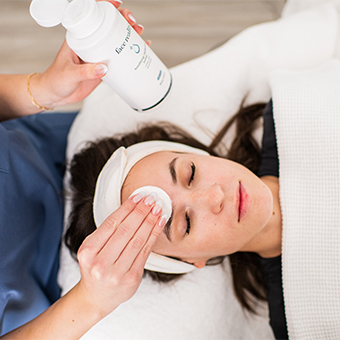
Dampen a cotton round pad with Soothing Radiance Toner and thoroughly swipe over the entire treatment area.
Step 3
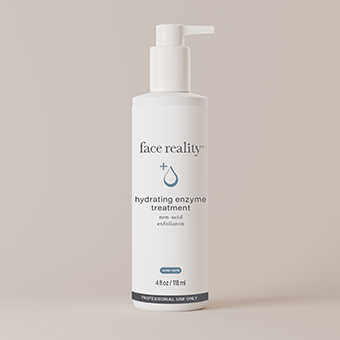
Use a fan brush to apply a thin layer of the Hydrating Enzyme Treatment to the treatment area. Leave on for 3–5 minutes (as tolerated) and remove completely with a warm towel. Can be used with or without steam.
Step 4
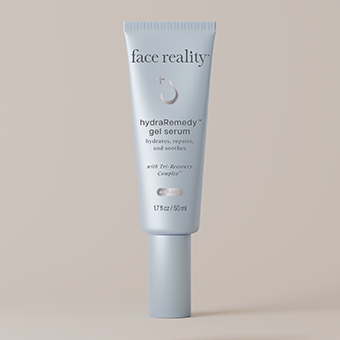
Apply two pumps of hydraRemedy Gel Serum and lightly massage it into the skin to prep for extractions.
Step 5 (optional)
The pores are now softened from the enzyme. Perform extractions then wipe the face thoroughly with Sal-C Toner to disinfect. You may perform High Frequency if appropriate. Apply Soothing Radiance Toner in place of Sal-C Toner for pregnant or nursing clients.
Step 6
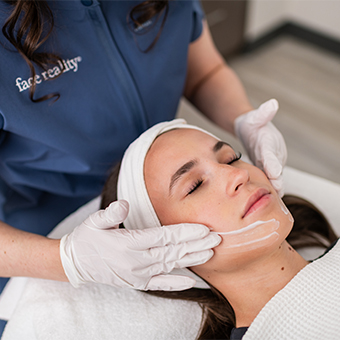
Apply a generous amount of hydraCalm Mask to the skin. Optional: Use cold globes to perform a light massage. Remove the mask with a warm towel.
Step 7
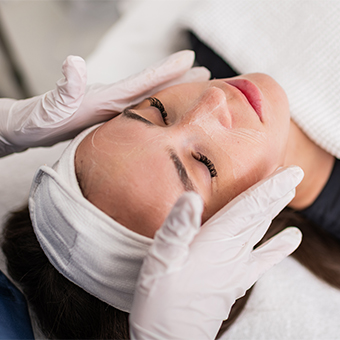
Apply two pumps of hydraRemedy Gel Serum for added hydration.
Step 8
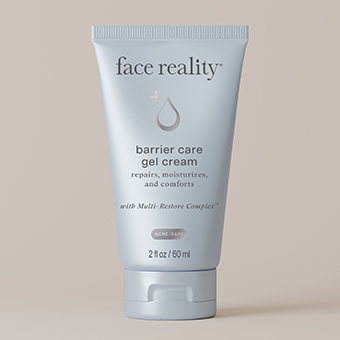
Apply a pea-size amount of Barrier Care Gel Cream to the skin for added moisture. Gently apply Daily SPF 30 Plus if the treatment is performed during the day.
Before and After

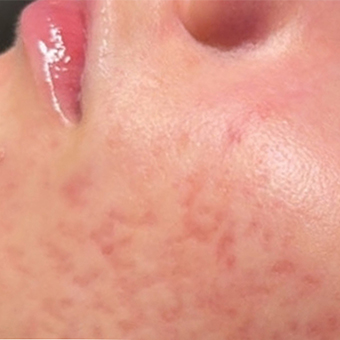
Results by Dana D’Amico, The Garden Med Spa.
- Log in to post comments